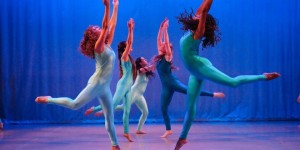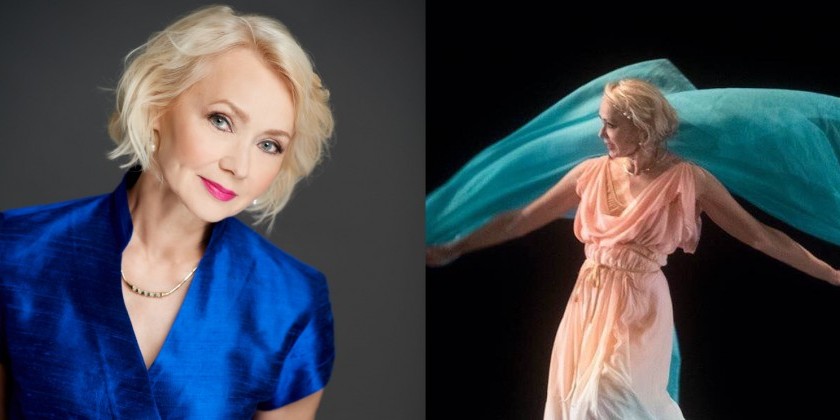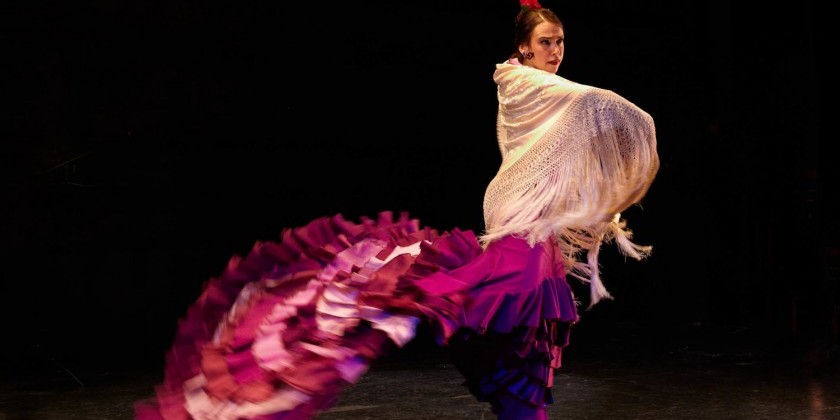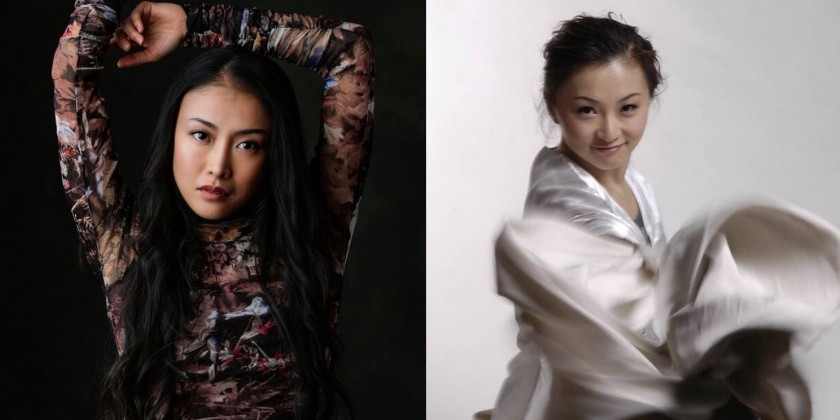Samuel Pott, Artistic Director of Nimbus Dance Works, Speaks Out
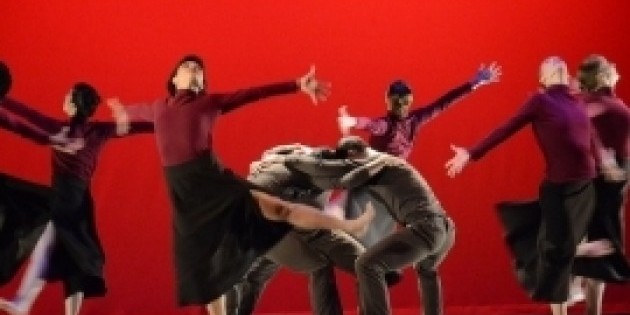
The Dance Enthusiast Asks Nimbus Dance’s Samuel Pott about "Lynchtown/Thistown."
Sammi Lim for The Dance Enthusiast
Dance pioneer Charles Weidman was an eyewitness to a lynching in Nebraska; the haunting affair moved him to choreograph Lynchtown (1936), one of three pieces in a series titled Atavisms. Nimbus Dance Works pays homage to Weidman and his groundbreaking classic by staging a revival of the dance along with new works performed by five New Jersey high schools. Collaborators include the Charles Weidman Dance Foundation, New Jersey Council on the Humanities, New Music USA, and Rutgers University/Dr. Jeff Friedman among others. Dance Speaks Out: Lynchtown/Thistown embodies Nimbus Dance Works’ mission to forge in-depth relationships with audiences and communities via dance.
Three years of preparation has finally culminated in Dance Speaks Out: Lynchtown/Thistown. Myriad events in the program include free lecture discussions on the legacy of social activism in dance, live dance, archival films and photo slideshows. However, the main event, an evening of dance on June 9th, will consist of: a revival of Charles Weidman’s original Lynchtown (1936); We Acquiesce, a new work choreographed by Samuel Pott; and student-created dances.
PS. Don't miss Nimbus Dance Works Spring Season from May 30—June 1: UNPLUGGED
Sammi Lim for The Dance Enthusiast: What sparked Nimbus Dance's decision to present Lynchtown and how did the collaboration with the five New Jersey high schools take flight?
Samuel Pott, artistic director of Nimbus Dance Works: We connected with the Charles Weidman Dance Foundation through board member, Robert Kosinski who had attended Nimbus Dance Works performances in Jersey City for years. While Nimbus is not particularly focused on historical dance, Lynchtown stood out for me on account of its subject matter and the brute force of the choreography.
.jpg) |
| Dancer: Wade Waton with Nimbus Dance Works in We Acquiesce by Samuel Pott; Photo Terry Lin |
With the overarching mission to work with students on dances that speak out on social and political issues, I also saw an opportunity for communication between youth from different regions and backgrounds. We were lucky enough to find five New Jersey high schools interested in participating in the project. They are Henry Snyder High School (Jersey City), County Prep High School (Jersey City), Newark Arts High School (Newark), Hi Tech High School (North Bergen), and Ocean County Vocational Technical School (Lakehurst). The five schools represent very different communities and parts of the state including urban, suburban and rural. When the schools come together to perform their dances, my hope is that they gain some measure of respect and camaraderie for one another as they communicate honestly through dance.
TDE: Lynchtown was inspired by dark times. Did introducing the heavy material to high school students pose any problems?
Pott: Our interaction has been entirely with the student dancers themselves and the faculty and administration of their schools. In those spheres, we have found the reception to this project to be extremely welcoming. What I have observed is that with the background of Lynchtown in which dancers must enact and embody such raw and violent impulses, high school students have grasped what it means to speak commandingly through dance. As for school administration and faculty, the project has dovetailed with a very current concern in every school we are working with: bullying. What is refreshing about addressing this issue by means of this project is that we have been able to both put bullying and violent group behavior in a historical perspective and also use dance as a way embodying all the associated emotions in order to grasp them more fully.
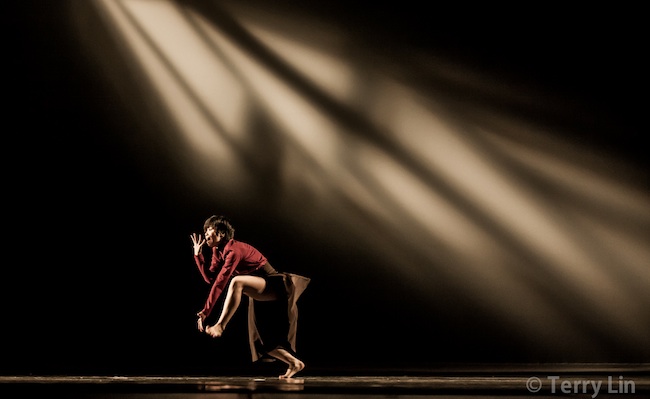 |
| Dancer: Yuko Monden with Nimbus Dance Works in Lynchtown by Charles Weidman; Photo Terry Lin |
TDE: How were the student-dancers selected and what is their age range?
Pott: The students range from High School Sophomores to Seniors. Each of the participating schools has a dance program, which the students are enrolled in. We did not audition for the project.
TDE: How do you think participating in these dances will affect this ‘future generation’ of dancers/choreographers?
Pott: For me, one of the special things about being a dancer is the sense of being connected to a tangible lineage and tradition. I remember learning about Frederic Franklin in college in dance history and then getting to work with him at Oakland Ballet, or watching videos of Graham “gods” like Donlin Foreman and Janet Eilber and ultimately having the chance to learn from and work with them directly with the Graham company. For the students, Lynchtown will no longer be something abstract from a dance history textbook. They have now become immersed and connected to the modern dance lineage by interacting with and responding to this work.
TDE: What is the ratio of dancers from Nimbus to high school students?
Pott: We generally have 1 dancer from Nimbus work with 9-15 high school dancers.
TDE: What problems or pleasant surprises arose in the process of piecing together student-created performances?
Pott: High School-age dancers are filled with ideas and are not afraid to share their thoughts! We wanted the student dances to emerge from the students themselves.What we found was that once the students took ownership of the project as their dance and their statement they also really delved into and discussed each choreographic choice that was made. That has been one of the most inspiring things to see – that the students have engaged in mature and articulate ways with this opportunity and challenge to say something in dance.
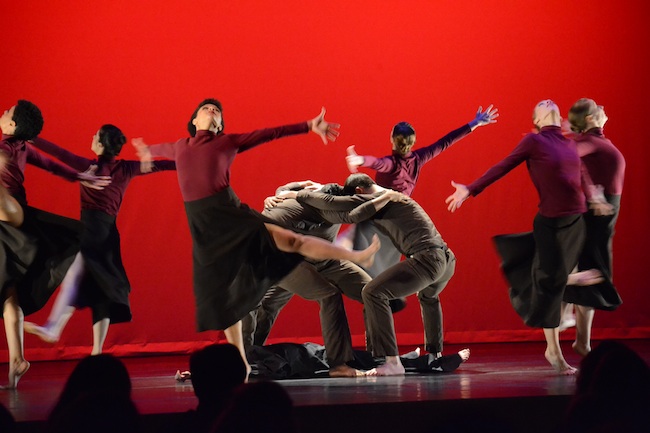 |
| Nimbus Dance Works in Lynchtown ;Choreography: Charles Weidman (1936): Photo Don Cuerdo |
TDE: Tell me a little about your piece, We Acquiesce. Does it parallel Lynchtown? How is it inspired by your own views on social injustice?
Pott: Weidman, along with figures like Martha Graham and Doris Humphrey, used dance as a form of activism and that resonated with the mission and cause for Nimbus Dance Works. So I wanted to give this type of direct statement-based dance a try! In We Acquiesce, I took the idea of a hanging or constriction by rope, but chose to demonstrate the idea that we are all somehow part and parcel of an acquiescence into constriction. In Lynchtown, there is a clear delineation between the perpetrators of the hanging and the victim (who is dragged onstage only at the end of the dance), but I found it hard to think in such polarized terms. I am happy with what we created in the way that there is a sense of conscience and the process of group violence made visible in the dance.
TDE: Some of the music in Lynchtown really gives you goosebumps! Do Peter Saleh and Sam Kaestner maintain this eerie feel in their compositions?
Pott: Yes, we wanted to maintain the same instrumentation – clarinet and percussion – in the two works so that when they are performed side-by-side. As we envisioned, they would exist in the same tonal environment. Where Lehman Engel’s score for Lynchtown is very percussion driven and almost militaristic, Peter Saleh’s music has a more subtle and mysterious quality.
For more information on Nimbus Dance Works, CLICKHERE
For ticket information, CLICK HERE
For ticket information, CLICK HERE






